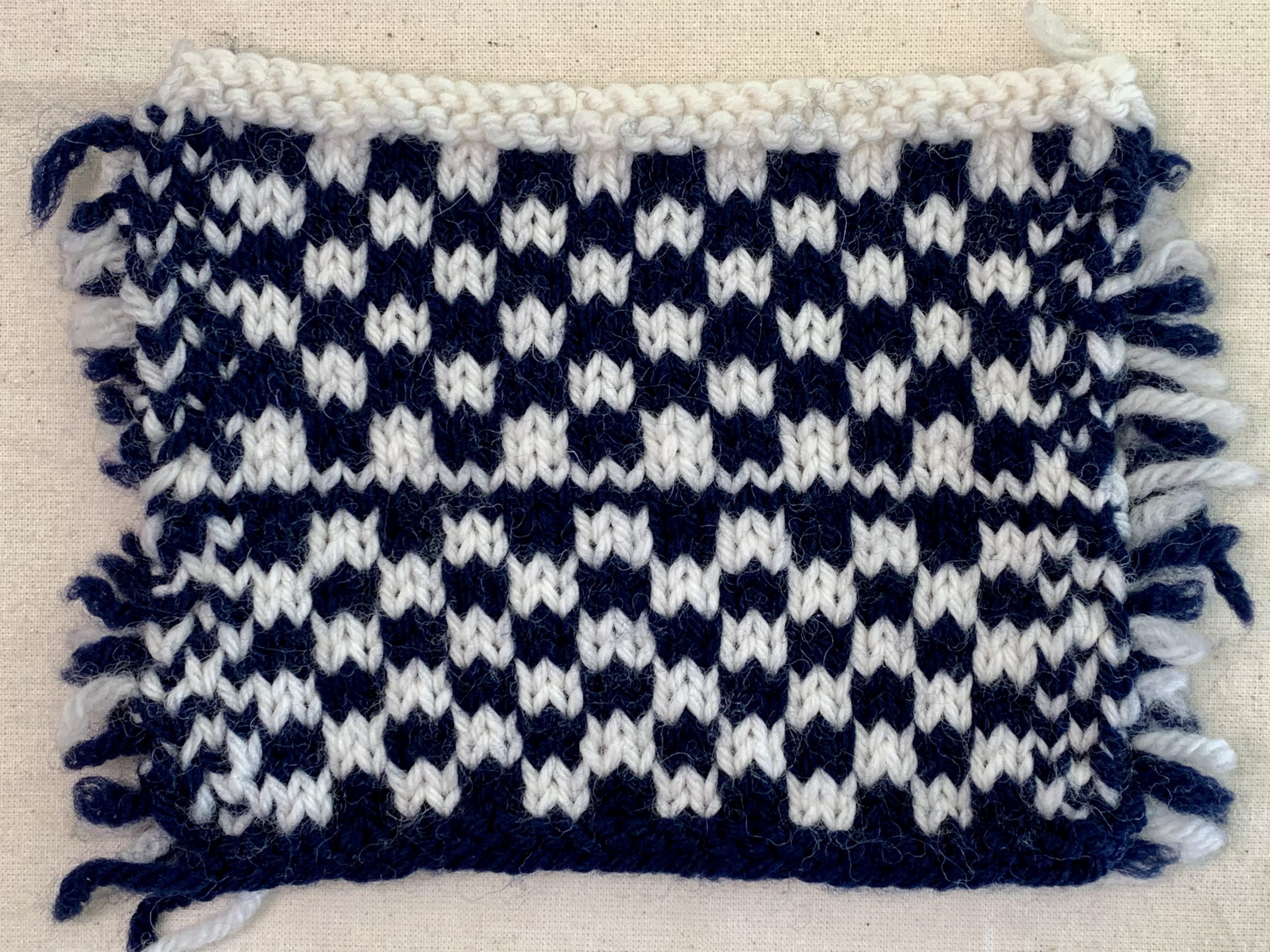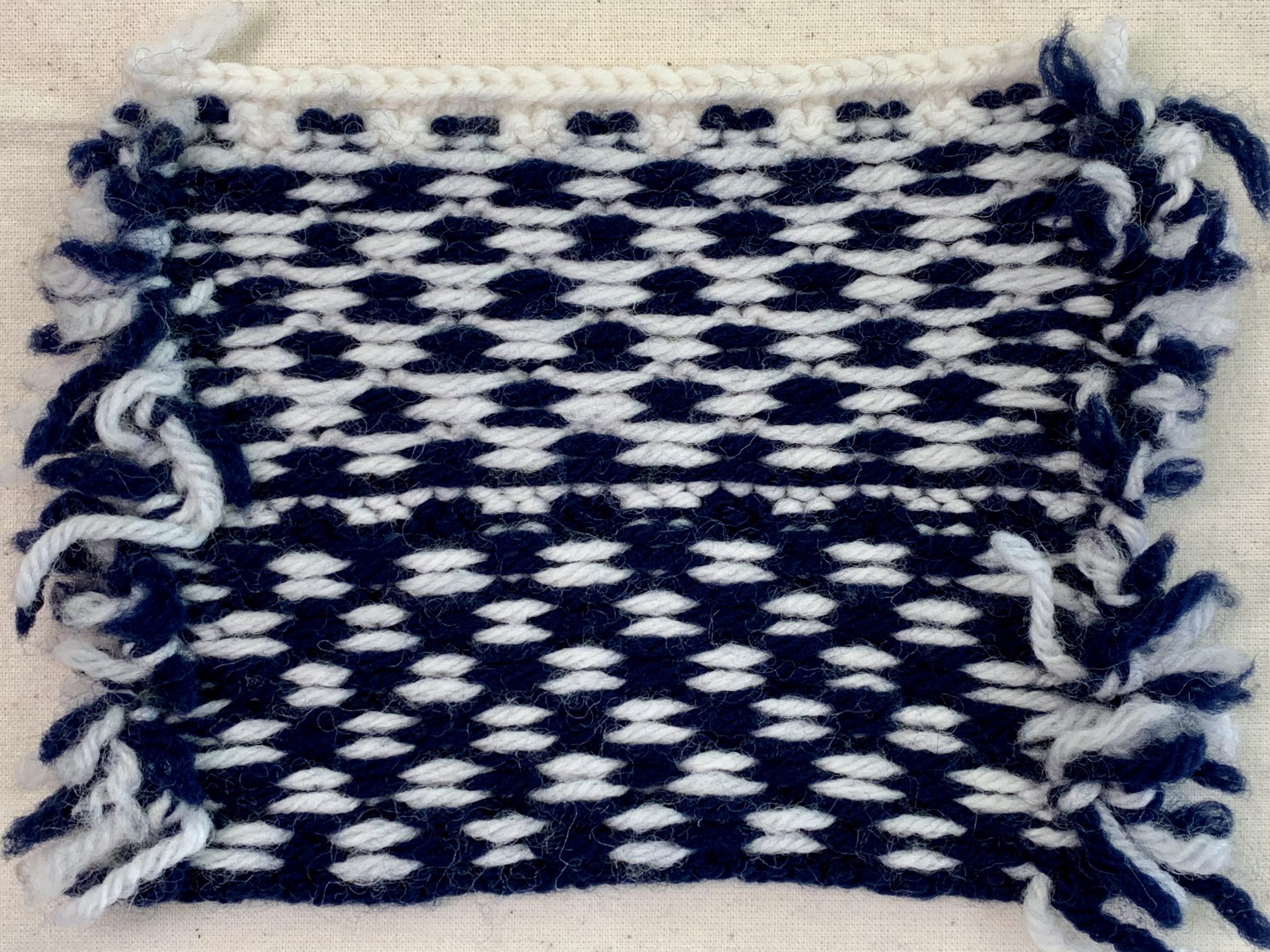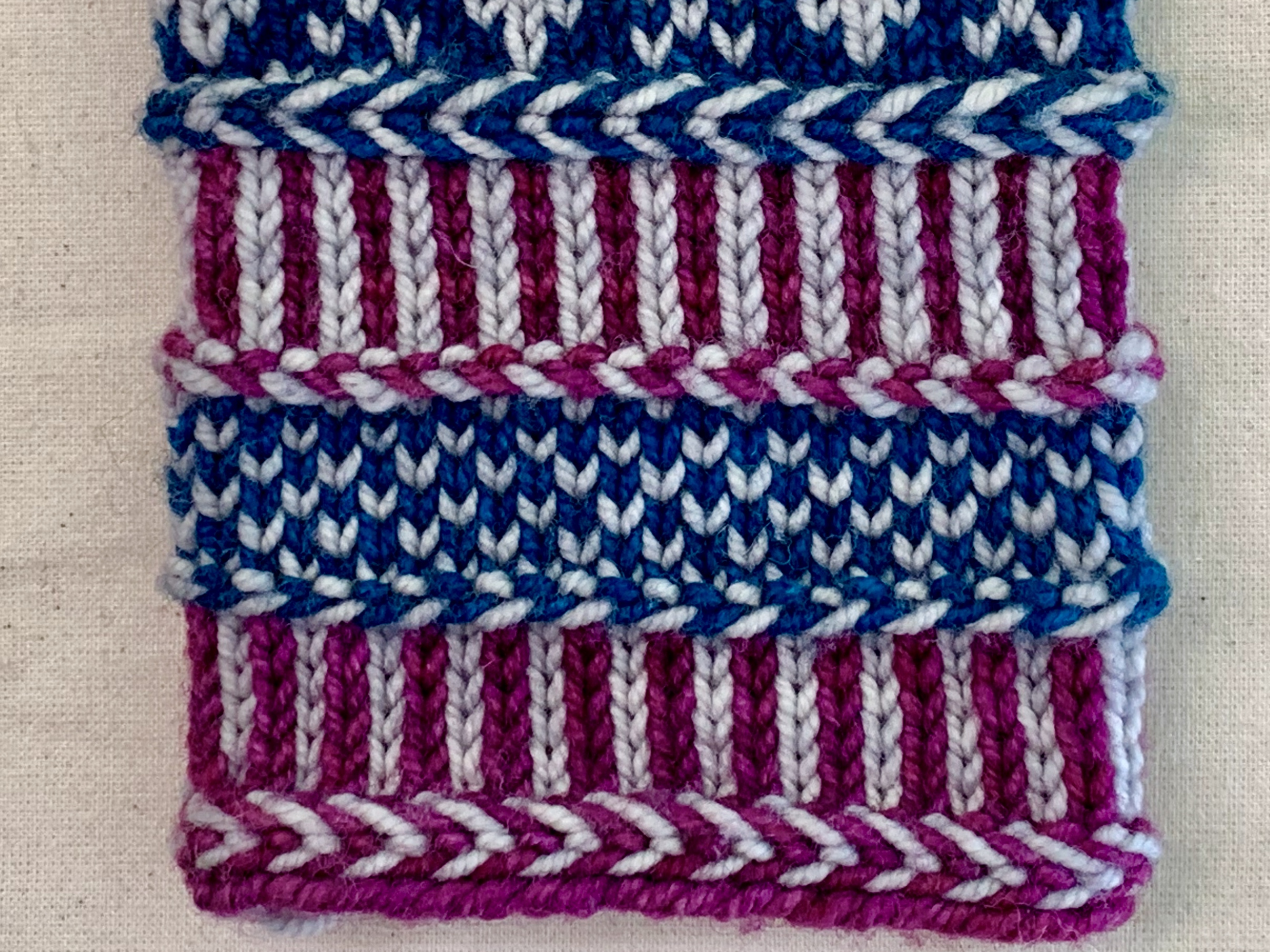Yarn color dominance. What is it? How can I control it?

When knitting with two colors, the two yarns can’t be in exactly the same place. One yarn will be carried below the other, and that makes it travel further to get to the needle. That makes the stitch just a little bit taller, and that stitch will be dominant.
Look at the photo above. On the top half of the piece, the navy stitches look a little bigger than the white stitches. On the bottom half of the piece, the white stitches look bigger.
Here’s the back of the same piece. Notice that the opposite is true. Where the navy colored stitches look bigger on the front, you see more of the white colored yarn on the back, and vice versa.

Always keep your yarns separate, and in the same order.

Usually, the yarn on your left will be dominant over the one on your right. The yarn on your right rides closest to your needle, and the yarn on your left travels from underneath to make a taller stitch. Your knitting style may make this opposite; make a little swatch and see. I’m carrying the lighter green on the left, and the darker green on the right.

Looking at the back side of my knitting, the darker color is riding near the needle, and the lighter green rides below the dark green. That makes it a little taller, so the stitch is a little bigger.
Even if you can’t remember which is “dominant,” always have the colors in the same position so your colorwork looks crisp. Make a note on your pattern so you remember which color goes on your left.
You can control which color is dominant.

On this piece, I’ve chosen pink to be my dominant color in the lower section of vertical stripes, and gray to be my dominant color in the upper section of vertical stripes. For my particular style of knitting, the yarn I carry on the left is dominant. You can pick up and drop your yarns as you work or carry one in each hand. You can even carry both in the same hand, as long as you orient one to be left and one to be right. I carry both in my right hand.
Make it work for you!
If you’re working with high contrast yarns, you can tone it down by making your darker color your dominant color. And if your yarns don’t have much contrast, you can bump it up by making your lighter color your dominant color. You’re the boss!
Related Video: Carrying Two Yarns in Your Right Hand for Stranded Colorwork


Thank you for the explanation. I have had online classes with Arne and Carlos and Martina Behm, who all dismiss the idea of color dominance. For me however, it is really evident. I made a color work hat once doing the opposite of what I should have done for dominance and ended up remaking it as the design was muddled in the first one but was crisp in the re-do. The design had architectural elements that looked terrible when they were subdued and great when they stood out against the background color. I suppose it does not matter for everyone, we all knit differently, but for me it does. When in doubt, a simple swatch tells the story; I was guilty of just jumping in and knitting that hat. It was always easy for me to remember which yarn was dominant when I knit with two hands, but I always have to think about it since I changed to knitting with both yarns held in my left hand. I check for the dominant thread riding below the other on the wrong side, but thinking closest and furthest from the needle is a much quicker and easier way to remember it. Thanks.
I'm sorry.... could you show an example of colour dominance? I hear about it, but have not seen it -- EVER! What do you mean? Show me an example!! Prove your point!
I would like to see a video on how to work with 3 or more strands of yarn for Stranded Colorwork (Fair Isle).
it is hard to see it in your mind., For me a vidio for me it is harder to see the mechanics in my mind as I have never been taught but have been reading on my own. The visual is better for comprehendsion.
Thank you for this explanation. It is the clearest one I've come across. Now I finally understand how to tell which yarn is in dominant position and why.
I don’t agree with this comment/ idea. There isn’t yarn dominance unless your tension is different. Look at Arne and Carlos video about this topic. It is on You Tube. They are experts about color work with years of experience